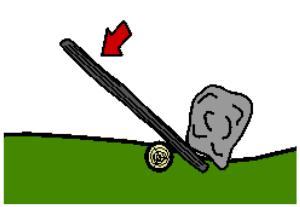Class 1 Lever: Difference between revisions
From DT Online
(Added animations) |
mNo edit summary |
||
| Line 21: | Line 21: | ||
* Centre distances of the holes on the handle are equal. | * Centre distances of the holes on the handle are equal. | ||
''(the red springs tend to move the jaws apart from each other)''. | ''(the red springs tend to move the jaws apart from each other)''. | ||
| {{#ev:youtube|TbdkXOo0z94|200x200|right||frame|loop=1&autoplay= | | {{#ev:youtube|TbdkXOo0z94|200x200|right||frame|loop=1&autoplay=0&playlist=TbdkXOo0z94}} | ||
|} | |} | ||
Latest revision as of 13:51, 28 August 2016
Description
This is the most common type of lever. With a Class 1 Lever the fulcrum is in the middle, like a see-saw. The effort is on one side and the load is on the other.
Features and Uses
Common examples of Class 1 Levers include: a crowbar, scissors, pincers, tinsnips, many push-bike brake levers and calipers and balance type weighing scales.
Animations
- Examples from Nguyen Duc Thang's YouTube Channel 2100 Animated Mechanical Mechanisms
Parallel Jaw Pliers - two back pins slide in the slots and to get parallel clamping surfaces of the jaws:
(the red springs tend to move the jaws apart from each other). |
|
Click top left to enlarge |









